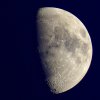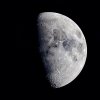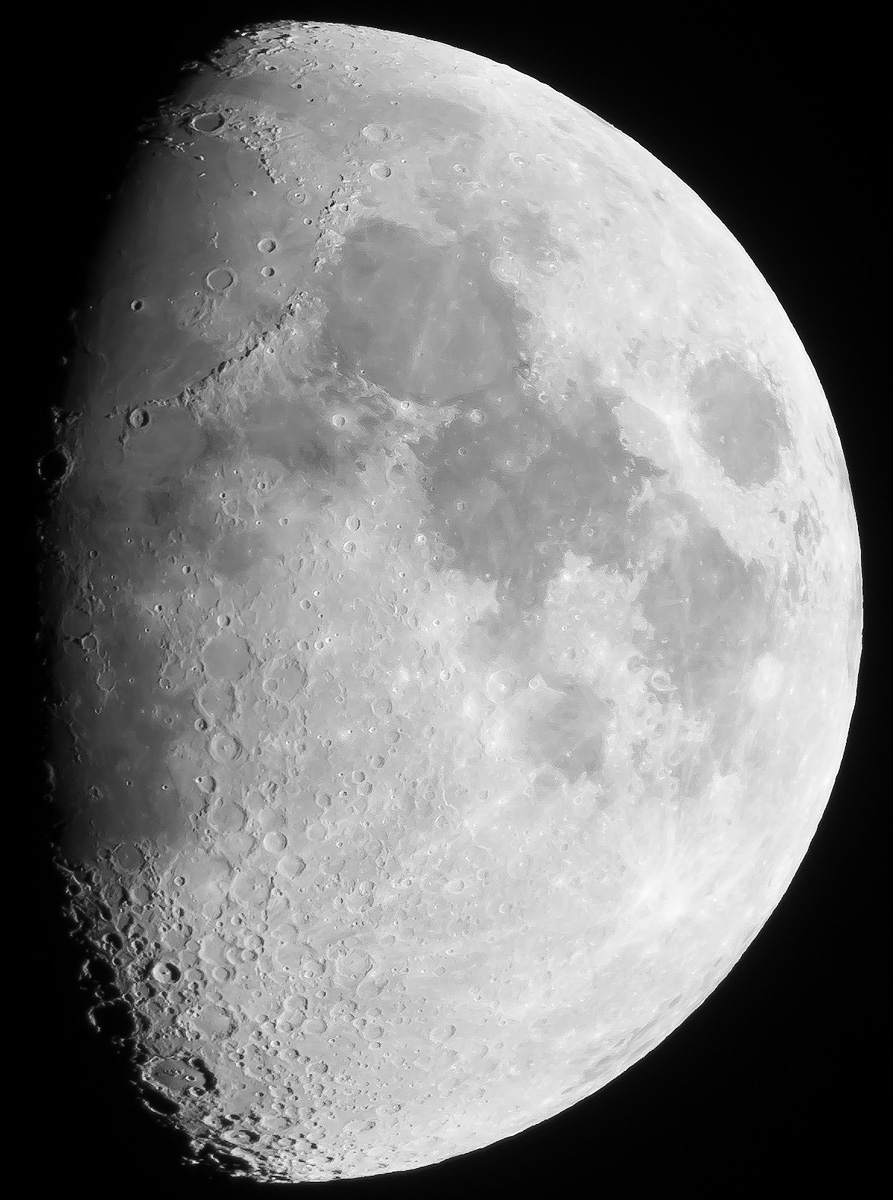Zv said:
It ultimately depends on what your goals are. Long focal length is certainly important, and I think around 800mm is a good place to start for shooting the moon with APS-C.
There is another factor, however. Fundamentally, resolving power is linked to the physical size of the aperture. This usually isn't as apparent in normal photography as it is in astrophotography, but when you start resolving the very fine detail that exists in objects in space, this fact begins to become very important.
Assuming you had an 800mm f/4 lens, 800mm f/5.6 lens, and 800mm f/8 lens. Most people's inclination would be to think, they are the same focal length, so they should be the same so long as I expose for longer with the f/5.6 and f/8 lenses. In terms of brightness of the object, that will be true...however the f/5.6 and f/8 lenses won't be resolving as fine a level of detail as the f/4 lens, and the f/8 won't resolve as fine a level as the f/5.6.
It isn't simply a matter of magnifying detail....it's maintaining your resolving power as you magnify it more. With the EF 600mm f/4 L II and a 1.4x TC, I have an f/5.6 lens. The reason my moon photos are so sharp and detailed is due to the fact that my combo maintains a high resolving power, thanks to a large aperture (remember, the entire surface area of the lens is gathering light for every single mathematical point on your subject...the more light gathered for each point, the more complete and refined those points will be when focused on your sensor).
If you just go with a 1250mm f/13.9 lens, the moon will be very large, but you won't actually be resolving more detail than say an 800mm f/8 lens. The 1540mm f/12.1 lens is actually going to be a better option than the 1250mm f/13.9 lens...it has a much larger physical aperture: 127mm vs. 89mm...a 127mm aperture is actually very nice...close to the 600mm f/4, and it would be my top recommendation from the list of telescopes offered by Lee Jay. A 1600mm f/12 optic is going to be a powerhouse for resolving moon detail....not to mention you could do some amazing planetary imaging with that and a barlow lens as well (at 4800mm with a 3x barlow, a simple web cam or something like the QHY5L-II color planetary camera, some video imaging software (I think the QHY5L-II comes with some software) and a tool like RegiStax, you could create AMAZING planetary images, as well as some awesome close-ups of the moon itself.)



